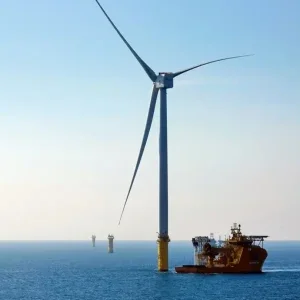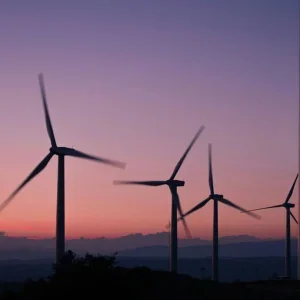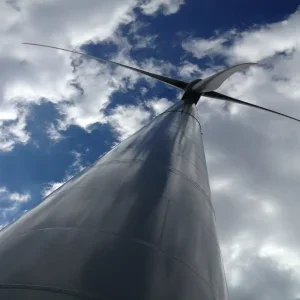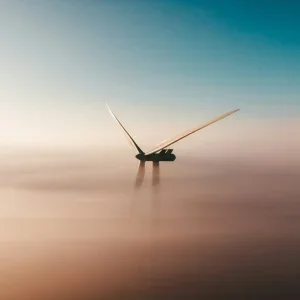With DONG Energy one of the first companies to enter the US offshore wind market, Elly Earls finds out from the company’s North American general manager Thomas Brostrøm how its experience in European waters will prove invaluable across the pond and what challenges the US industry will face given its relative immaturity.
After being approved to take over a 1GW offshore lease in June, the world leader in offshore wind, DONG Energy, is all set to enter the US market for the first time.
And not only could its first project outside Europe bring thousands of jobs to Massachusetts, the company’s more than 20 years of expertise in offshore wind could be just the boost the US’s fledgling industry needs to get off the ground. But what challenges will DONG and other industry stakeholders face as they work to establish a viable offshore wind sector in the US?
On 12 June 2015, the US Bureau of Ocean Energy Management (BOEM) approved DONG’s takeover of a 1GW offshore wind lease off the coast of Martha’s Vineyard, Massachusetts, which had originally been awarded to RES Americas Developments at the BOEM’s offshore wind auction in January. The project area is located approximately 15 miles from shore with water depths of 130-165ft; an average wind farm of a similar size would require ongoing operations and maintenance staff of up to 100 people for the 25-year life of the project, as well as around 1,000 staff a year during an estimated three-year construction period.
State of play
But beyond providing jobs, Bay State Wind, as the company’s Massachusetts initiative has been christened by DONG, could also be a game-changing scheme for the US’s offshore wind industry, which is yet to boast one commercial wind farm (although Deepwater Wind’s five-turbine Block Island wind farm off the coast of Rhode Island is expected to come online in 2016), as DONG will bring to the table decades of experience in the European offshore wind sector.
"DONG Energy made its first offshore wind investment nearly 25 years ago and now has over 3,000MW of operational offshore wind projects," says Thomas Brostrøm, DONG Energy’s North America general manager, adding that as the site conditions along the eastern seaboard of the US are very similar to those in Northern Europe, the company is particularly well placed to contribute significantly to the sector with relative ease.
"Bay State Wind is DONG Energy’s first entry into the US market. Massachusetts has some of the best offshore wind conditions in the world, with favourable water depths and ground conditions similar to DONG Energy’s successful projects in the UK and Germany," he continues.
Currently, the company is still at the very early stages of the project so will now need to undertake more detailed surveys to fully characterise the site.
On top of this, another key reason for Massachusetts’ attractiveness to DONG is its market fundamentals; the state has around 20% of its generation scheduled to close in the next few years and a strong commitment to renewable portfolio standards (RPSs) and clean air standards. Indeed, Massachusetts’ renewable energy portfolio standard, which was updated in 2011, requires all retail electricity suppliers to supply 15% of kilowatt/hour (kWh) sales from eligible renewable resources by 2020, just one of the reasons DONG believes there is undoubtedly a place for offshore wind in the future energy mix of Massachusetts.
And looking more broadly, the company is confident that there is potential far beyond its first planned project across the pond, as the US as a whole is one of the larger emerging offshore wind markets outside north-west Europe with its established offshore wind spatial planning processes and binding renewable targets at state level. Plus, as the site characteristics found along the East Coast of the US are broadly similar to those that can be found in Europe, DONG Energy will be able to use proven expertise to harness the world-class site conditions.
"DONG Energy has delivered a third of offshore wind capacity installed, encompassing some of the largest and most technologically advanced offshore wind farms in the world," Brostrøm remarks.
The hope, therefore, is that the learning and proven technology being deployed in Europe (such as turbines, foundation concepts and electrical layouts) can be transferred to the US market to great effect.
Challenges ahead
However, while the potential in the US may be significant, other operators have faced significant challenges actually bringing their offshore wind projects to fruition, largely due to site location and financing issues. For example, Cape Wind, a 486MW project proposed in 2001, has faced significant challenges, opposition and litigation that have halted its progress, the biggest setback coming in January 2015, when two local utilities that had contracts to buy power from the wind farm – National Grid and Eversource Energy – terminated their power purchase agreements with the developer because of missed project development deadlines. Later, in March, Cape Wind cancelled its lease in New Bedford, Massachusetts, for its planned project-staging area.
Yet, DONG Energy’s first project is unlikely to suffer the same setbacks as those that have come before. Not only is the site, chosen by BOEM, located 15 miles from shore, "It’s absolutely a better plan [than Cape Wind, which is five miles offshore]," said Audra Parker, president of the Alliance to Protect Nantucket Sound. "We find these areas to be far superior [for offshore wind farms]." The company, which has annual revenues of $11 billion, is also planning to finance the project’s construction without help from investors. Financing has been one of the biggest struggles for Cape Wind.
DONG Energy also recognises that large energy infrastructure projects such as offshore wind farms require stable framework conditions and dedicated political support, and is therefore taking an active part in the emerging debate on this front. At present, the company is focused on bringing forward the legislation that it feels will be necessary to support offshore wind in Massachusetts. This would involve utilities being able to enter into long-term contracts for wind, hydroelectricity and other sources of clean energy, and is being pushed forward by state representative Patricia Haddad, a keen supporter of offshore wind.
There is a great opportunity for Massachusetts to be a first mover in the US offshore wind market and take advantage of the jobs and economic development this may bring, the company believes. Moreover, looking more widely, there has been strong support from the White House and moves from other states to capitalise on BOEM’s leasing process, showing that enthusiasm for offshore wind is far from limited to Massachusetts. For example, Maryland has a project off its coast and there are also future opportunities in New Jersey and New York.
Finally, DONG Energy is always committed to working with local partners on the ground, as well as learning lessons from other operators, to ensure its projects are successful. And although it’s still very early days for this particular scheme (the company has only been on the ground in the US for a couple of months), it plans to follow the same model it does in Europe, which involves partnerships across the value chain; for example, establishing operations and maintenance bases that use the skills and expertise of local staff, as well as local suppliers.
It really is very early days for Bay State Wind; indeed, apart from getting the approval from BOEM to lease the area, DONG has not yet filed any applications with the federal or state government for the project, both of which have lengthy approval processes to go through, including environmental reviews. Construction, which would take around three years, is therefore still some time away.
Yet, the overall feeling at the company is one of optimism and excitement about the opportunity the US market presents as a natural complement to its European business, which currently comprises 14 wind farms in operation, four projects under construction and a further 12 in the development stages. "The Company has built a strong pipeline of new projects to reach its publicly stated target of 6,500MW installed offshore wind capacity by 2020," Brostrøm says.
And Bay State Wind could be just the beginning of a whole new chapter for the global offshore wind leader. "Our project in Massachusetts, Bay State Wind, is our first step into a new market and we look forward to bringing the benefits of offshore wind to the Commonwealth," the company concludes.






